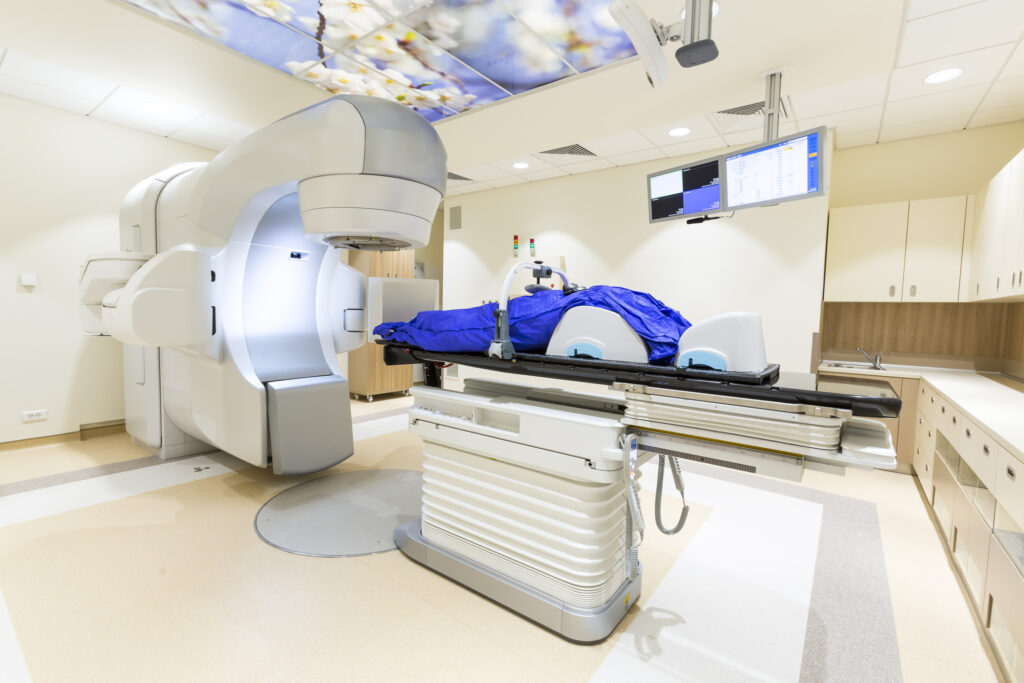Summary: FLASH proton therapy is an innovative approach in cancer treatment that leverages ultra-high dose rates to deliver radiation with minimal side effects. For patients with bone metastases, this technique presents a promising alternative to conventional radiation therapy due to its potential to reduce treatment toxicity and improve quality of life. This article explores the principles of FLASH proton therapy, reviews its benefits and limitations, and evaluates its feasibility for treating bone metastases. Additionally, it highlights ongoing research and the steps needed to bring this revolutionary therapy to clinical practice.
Introduction to FLASH Proton Therapy
Cancer treatment has evolved significantly in recent years, with advancements in radiation therapy being at the forefront. Proton therapy, a type of particle therapy, is already known for its precision in targeting tumours while sparing surrounding healthy tissues. FLASH proton therapy builds on this foundation by delivering ultra-high doses of radiation (greater than 40 Gy/second) in extremely short durations. This approach has shown potential for achieving tumour control while minimising radiation-induced side effects, known as the “FLASH effect”.
What is the FLASH Effect?
The FLASH effect refers to the phenomenon where high-dose radiation delivered over milliseconds causes less damage to normal tissues compared to conventional dose rates. Preclinical studies have demonstrated reduced toxicity to healthy tissues, such as skin, lungs, and gastrointestinal organs, while maintaining tumouricidal effects. This unique feature makes FLASH proton therapy a game-changer in radiation oncology.
Bone Metastases: A Clinical Challenge
Bone metastases occur when cancer spreads to the bones, often causing severe pain, fractures, and reduced mobility. They are most commonly associated with advanced cancers such as breast, prostate, and lung cancer. The primary goals of treating bone metastases include pain relief, prevention of fractures, and improving the patient’s quality of life.
Limitations of Conventional Treatments
Radiation therapy is a cornerstone in managing bone metastases. While effective in alleviating pain and preventing complications, conventional radiation therapy often causes collateral damage to surrounding tissues, such as the bone marrow and nearby organs. This can lead to side effects such as fatigue, skin irritation, and reduced blood cell production.
For patients with advanced cancer, who often have limited treatment options, reducing these side effects is critical. FLASH proton therapy offers a potential solution by targeting metastatic lesions with precision and sparing healthy tissues.
Benefits of FLASH Proton Therapy for Bone Metastases
Reduced Toxicity
One of the key advantages of FLASH proton therapy is its ability to minimise damage to healthy tissues. In the case of bone metastases, this translates to reduced risk of complications such as bone marrow suppression and soft tissue damage. This is particularly important for patients who may already be experiencing significant systemic burden from their primary cancer or other treatments.
Shorter Treatment Time
The ultra-high dose rate of FLASH therapy means that treatment sessions are significantly shorter than conventional radiation therapy. This not only improves patient comfort but also reduces the logistical burden on healthcare facilities. For patients with bone metastases, who may have limited mobility or advanced disease, shorter treatment times can be a major benefit.
Potential for Enhanced Pain Relief
Preclinical studies suggest that FLASH proton therapy may provide faster and more effective pain relief compared to conventional therapies. By delivering high doses of radiation directly to the metastatic lesion, this approach may achieve better tumour control and reduce inflammation, which are key contributors to pain in bone metastases.
Challenges and Limitations
Technical Challenges
Implementing FLASH proton therapy requires specialised equipment capable of delivering ultra-high dose rates with precision. Most proton therapy centres are not yet equipped to provide FLASH therapy, and significant upgrades may be needed to adapt existing facilities.
Additionally, accurate imaging and treatment planning are crucial for targeting metastatic lesions without harming surrounding tissues. For bone metastases, this is particularly challenging due to the complex anatomy of the skeletal system and the proximity of critical structures such as the spinal cord.
Limited Clinical Evidence
While preclinical studies have demonstrated the benefits of FLASH proton therapy, clinical evidence is still limited. Most of the data available comes from animal models and small pilot studies, making it difficult to draw definitive conclusions about its safety and efficacy in humans.
For bone metastases specifically, more research is needed to determine optimal dosing, treatment protocols, and patient selection criteria.
Cost and Accessibility
Proton therapy is already more expensive than conventional radiation therapy, and the additional technical requirements for FLASH therapy may further increase costs. This could limit access to the therapy, particularly in resource-constrained healthcare systems. Addressing these cost barriers will be essential for making FLASH proton therapy widely available.
Feasibility of FLASH Proton Therapy for Bone Metastases
Patient Selection
Not all patients with bone metastases may be suitable candidates for FLASH proton therapy. Factors such as the size and location of the metastases, the patient’s overall health, and the presence of other treatments must be carefully considered. Patients with isolated or oligometastatic disease may derive the greatest benefit from this approach.
Integration into Existing Protocols
To ensure the successful implementation of FLASH proton therapy, it must be integrated into existing treatment protocols for bone metastases. This includes determining how it can complement or replace conventional therapies, as well as identifying the best combination of treatments for individual patients.
Research and Development
Ongoing clinical trials are crucial for establishing the safety, efficacy, and cost-effectiveness of FLASH proton therapy for bone metastases. These trials should focus on outcomes such as pain relief, tumour control, and quality of life, as well as long-term safety and survival rates.
Collaboration between researchers, clinicians, and industry partners will be essential for advancing this field and addressing the technical and logistical challenges associated with FLASH therapy.
Future Directions
Advancing Technology
Developments in proton therapy technology, such as improved beam delivery systems and imaging techniques, will play a critical role in the widespread adoption of FLASH therapy. Innovations such as pencil beam scanning and adaptive radiation therapy may enhance the precision and effectiveness of FLASH treatments for bone metastases.
Expanding Clinical Applications
While this article focuses on bone metastases, FLASH proton therapy has potential applications in other areas of oncology, including paediatric cancers and tumours near critical structures. Expanding its use across multiple cancer types will provide valuable insights into its benefits and limitations.
Addressing Cost Barriers
Efforts to reduce the cost of proton therapy, such as developing more affordable equipment and streamlining treatment workflows, will be essential for making FLASH therapy accessible to a broader patient population. Policymakers and healthcare providers must work together to ensure equitable access to this promising technology.
Conclusion
FLASH proton therapy represents a significant advancement in cancer treatment, offering the potential to improve outcomes for patients with bone metastases. By delivering ultra-high doses of radiation with minimal side effects, this innovative approach could transform the way metastatic disease is managed.
However, significant challenges remain, including technical barriers, limited clinical evidence, and cost constraints. Addressing these challenges will require continued research, collaboration, and investment in technology and infrastructure.
As the field of radiation oncology evolves, FLASH proton therapy has the potential to become a cornerstone of cancer care, offering hope to patients with bone metastases and beyond.
Disclaimer
The content presented in this article, Assessing the Feasibility of FLASH Proton Therapy for Patients with Bone Metastases, is intended for informational and educational purposes only. It does not constitute medical advice, diagnosis, or treatment and should not be relied upon as a substitute for professional healthcare guidance. While efforts have been made to ensure the accuracy of the information, FLASH proton therapy remains an experimental technique and is not yet widely available or clinically validated for the treatment of bone metastases.
Readers are advised to consult with qualified healthcare professionals before making any decisions related to cancer treatment. Open Medscience does not endorse or recommend any specific medical therapies or products, and assumes no responsibility for any consequences resulting from the use of the information contained herein. All clinical decisions should be made in consultation with a licensed medical practitioner familiar with the patient’s condition.
You are here: home » diagnostic medical imaging blog »



